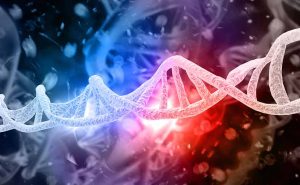Since children with Down syndrome develop slowly due to their physical characteristics, weaning food also needs to be carefully considered. In this article, we will explain how to proceed with weaning food for children with Down syndrome and what to keep in mind.
Introduction
Since children with Down syndrome develop slowly due to their physical characteristics, weaning food also needs to be carefully considered. In this article, we will explain how to feed babies with Down syndrome and what to look out for.
What is Down Syndrome?
Down Syndrome (Trisomy 21) is a condition caused by the excess chromosome 21, which is reported to occur in 1 in 700 to 1 in 1,000 children.
Down syndrome is characterized by low muscle tone and, in many cases, delayed intellectual development. The developmental course is much the same as in the normal case, but the overall development is slower.
It is often associated with heart disease and other conditions, but with advances in medical care, rehabilitation, and education, most people these days lead normal school and social lives.
In recent years, it has become possible to diagnose ‘Trisomy 21‘, ‘Trisomy 18‘, and ‘Trisomy 13‘ probabilistically through Maternal serum marker tests and NIPT (New Non-invasive Prenatal Testing). If the result is positive, the diagnosis is confirmed by amniotic fluid testing.
In the past, the only way to check for chromosomal abnormalities in the fetus was to perform highly invasive tests on the mother, such as the ‘chorionic villus test’ and the ‘amniotic fluid test.’ However, it has become possible to test for chromosomal abnormalities by only collecting blood samples now since it has been discovered that the baby’s chromosomes flow in the mother’s blood as fragments.
What are the Physical Characteristics
of a Child with Down Syndrome?
Physical characteristics that may be problematic for babies with Down syndrome when weaning include a small upper jaw and low tone of all body muscles.
They may have difficulty closing their tongue in their mouth, breathing through their nose, and swallowing with their tongue tucked into their mouth.
What are the necessary conditions
for starting weaning?
According to the Breastfeeding and Weaning Support Guide:
≪The following are some of the developmental guidelines for a child at the time of initiation: a firm neck, the ability to turn over, the ability to sit up for more than 5 seconds, the ability to put a spoon or other object in the mouth and push it out with the tongue less often, and the interest in food. The appropriate age for this is around 5 to 6 months of age. However, since children’s growth and development varies from person to person, the age of the child is only a guide, and it is important to carefully observe the child’s condition and provide support so that parents can recognize the signs that the child wants to eat.≫
This is also applicable to children with Down syndrome, as long as they have the ‘physical condition’ and signs that they want to eat, it is safe to start. If these conditions are not yet in place, the start of feeding should be delayed.
How to wean a baby with Down syndrome?
Once the physical condition of the child stabilizes and the above conditions are met, begin practicing spoon-feeding mushy foods at about 5 to 6 months of age. It is said that it is best to start at 7 to 8 months at the latest.
At first, start with one spoonful at a time when they are in a good mood and feed them slowly to get them used to the feel of the spoon and the food. The spoon should be as flat, soft, shallow-bottomed, and narrow as possible.
The reason for this is so that they learn to take in food. The spoon is placed in front of the face and the upper and lower lips are closed, and the action of taking in food with the mouth is practiced and acquired.
The act of eating consists of three steps: taking in food with the mouth, processing it in the mouth, and swallowing it down the throat. We adults perform the act of ‘eating’ with ease, but this act is acquired through practice.
The way the baby uses his/her mouth to eat food is completely different from the way he/she used to move his/her mouth when he/she was breastfed. It is very difficult for babies because they have to practice something new, and sometimes it takes a long time. If your baby is having trouble moving his lips, you can start by having them lick the food off your finger to get a taste for it.

Due to their physical characteristics, babies with Down syndrome may require somewhat more time to acquire the acts of ‘taking in with the mouth’ , ‘processing in the mouth’, and ‘swallowing with the throat’.
Start with a mushy food and then gradually move on to harder foods. If the baby seems to have difficulty eating the food, thicken it with potato starch, crumbs, or yogurt to make it easier for the baby to eat.
There is no need to rush the accomplishment of weaning. It is important to remember that weaning is a time when babies are practicing the act of eating, and it is important to proceed according to the baby’s ability to perform basic movements. Generally speaking, babies with Down syndrome are only able to start chewing after the age of three, when their upper and lower baby teeth have come in. Therefore, the completion of weaning is usually around 3 years of age. It is important to understand that it is not the time to be concerned about the baby not chewing, but rather to be supportive of the baby.
We have been talking about meal forms, but there is no problem to proceed with flavoring as you go along.
What precautions should be taken to wean a baby with Down syndrome?
In some cases, babies with Down syndrome may take a little longer to develop the conditions to start weaning.
If you start before the child is ready, there is a risk of accidental aspiration or choking. 5 to 6 months or later, or at the latest around 7 to 8 months, is considered a good time to start.
Even if the physical conditions are suitable and the parents are enthusiastic about weaning, if the baby is not interested in food, it will be difficult to proceed and the start of the process must be delayed.
Some people believe that pacifier training is effective for babies who can keep their mouths closed and are not mouth-breathing. In Japan, there are various opinions on the pacifier, both for and against, so we introduce this as one method.

Babies with Down syndrome have low oral tension and a large tongue, which makes it difficult to close their mouths and causes the tongue to move back and forth a lot.
As a result, food is easily pushed out with the tongue, and the spoon tends to be pushed into the back of the mouth.
Also, if a spoon is hooked onto the top lip and food is placed into the mouth by hooking the spoon onto the upper lip, the tongue remains protruding, which makes it difficult to practice and acquire the behavior of taking in food with the top and bottom lips closed.
The important thing is to wait for the baby to take in food on his or her own.
It is easy to think that food should just get dispersed from the mouth, but it is necessary to make sure that the series of actions are followed: straighten the spoon and place it at their lips, take the food with their own mouth, slowly swallow it after munching it in the mouth.
The amount of food each person consumes varies from person to person. The same is true for babies. There is no need to worry too much if the amount of food eaten is very small.

However, if it is Anorexia, in which the child refuses to eat, then it is a problem.
For example, a parent may try too hard and the baby may refuse to consume.
Try to encourage your baby to enjoy eating and to keep up with his/her pace, and don’t worry too much about the general weaning process.. If the anorexia is severe, you will need to temporarily stop feeding and change the environment while you monitor the situation. If it continues for a long time, consult your doctor or specialist.
Conclusion
When weaning a baby with Down syndrome, we often struggle with many things.
In the midst of your worries and frustrations, try to remember that mealtime is fun and food is delicious, so that you can relate to your baby on a daily basis.
If things do not go well, you can consult your doctor or a specialist, so there is no need to worry too much.
【References】
- Tsubame no Kai – 「ダウン症のお子さんの摂食指導で思うこと」 昭和大学小児成育歯科学講座 綾野理加
- Kyoto University – 「Down症の乳幼児の食事のポイント」静岡県立こども病院 遺伝染色体科 長谷川知子、歯科 加藤光剛l
- Ministry of Health, Labour and Welfare – 授乳・離乳の支援ガイド(2019年改定版)
- Japan Down Syndrome Society – 「未来の食習慣の形成のために…離乳についてのすすめ」2015年2月第2回山梨ダウン症フォーラム 歯科 武田康男
Since children with Down syndrome develop slowly due to their physical characteristics, weaning food also needs to be carefully considered. In this article, we will explain how to proceed with weaning food for children with Down syndrome and what to keep in mind.
Article Editorial Supervisor

Dr. Shun Mizuta
Head Doctor, Hiro Clinic NIPT Okayama
Board Certified Pediatrician, Japan Pediatric Society
As a pediatrician, he has been engaged in community medicine in Okayama Prefecture for nearly 30 years.
Currently, he is working to educate the community about NIPT as the Head Doctor of Hiro Clinic NIPT Okayama, utilizing his experience as a pediatrician.
Brief History
1988 – Graduated from Kawasaki Medical University
1990 – Clinical Assistant, Kawasaki Medical University, Department of Pediatrics
1992 – Department of Pediatric Neurology, Okayama University Hospital
1993 – Head of the First Department of Pediatrics, Ihara Municipal Hospital, Ihara City
1996 – Mizuta Kodomo Hospital
Qualifications
Board Certified Pediatrician
 中文
中文






















